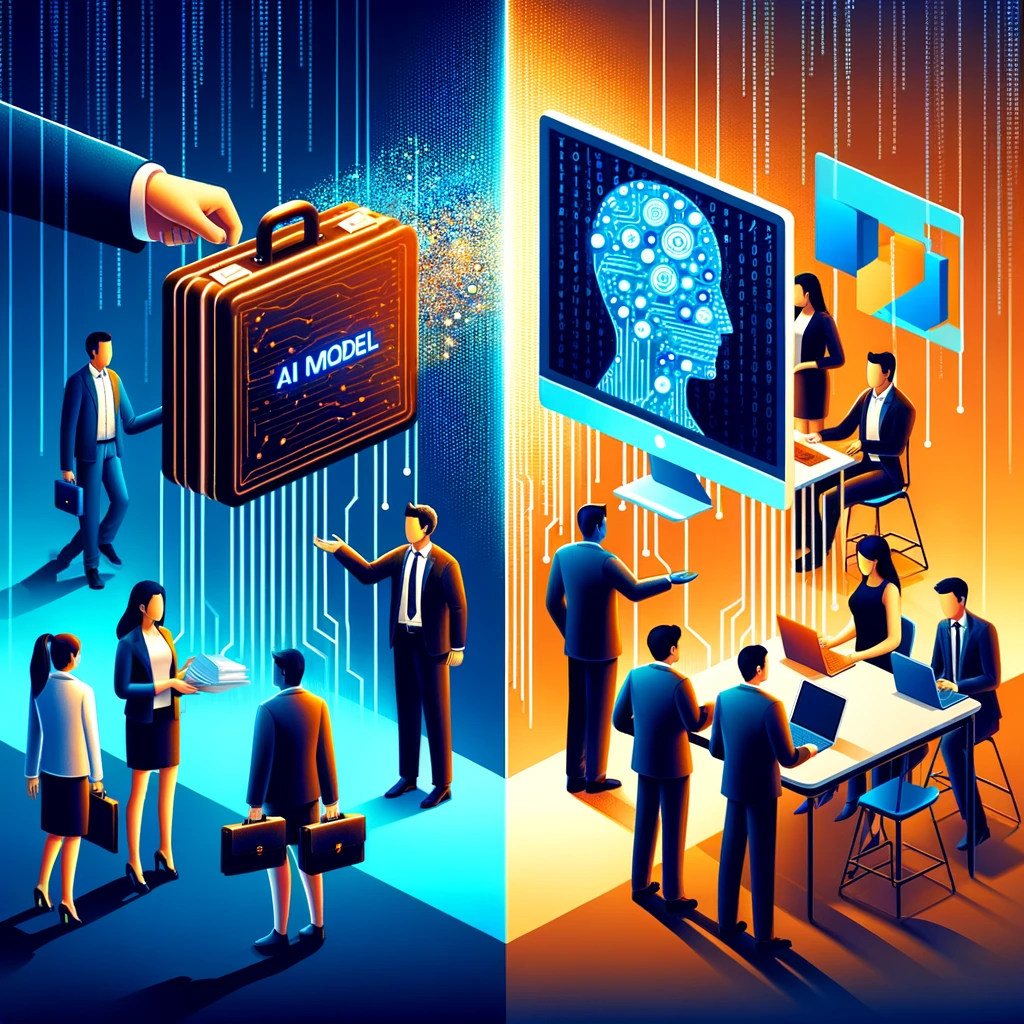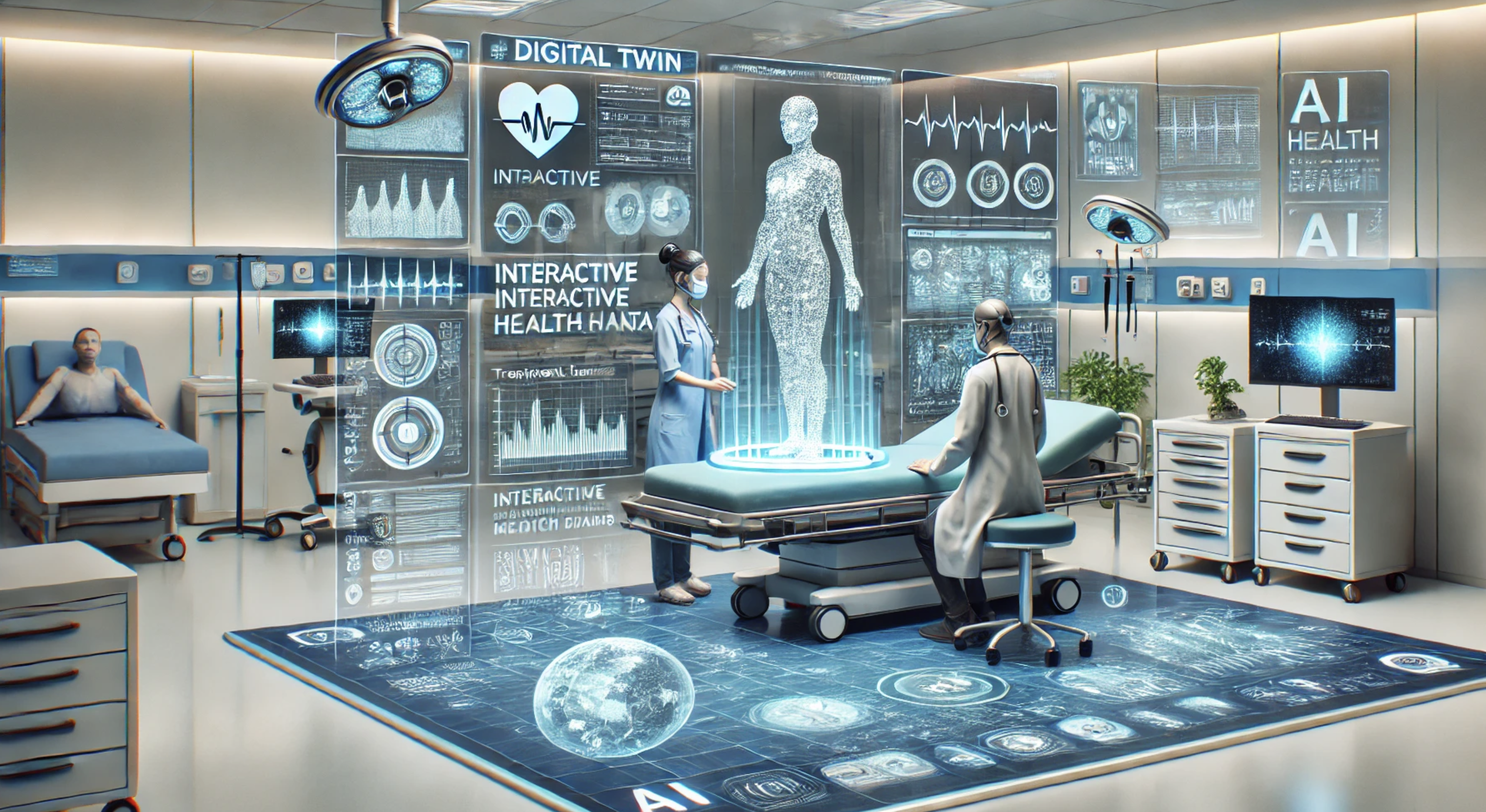With the global generative AI (artificial intelligence) market currently valued at over $196 billion and projected to reach $1.81 trillion by 2030, generative AI is reshaping industries globally as technology evolves.
LLMs (Large Language Models) lead this charge, but as excitement for these generative models grows, companies face a major decision: should they build their own generative AI systems or invest in customising existing foundational models?
The decision to develop a custom generative AI model or to opt for a ready-made platform involves considerations of resource investment, potential for innovation, and operational integration.
This choice is not just technical—it’s a strategic decision that could determine your company’s competitive advantage in the future.
In this blog, we explore the advantages and drawbacks of both approaches, from the initial investment of resources to the long-term benefits of customising foundation models vs. building your own.
4 Key Considerations When Deciding Whether to Build vs. Buy Generative AI
When it comes to integrating generative AI into your business, deciding whether to build a system from scratch or buy a ready-made solution will be one of your first major decisions.
To make an informed choice, you’ll need to weigh several factors to determine how well each approach aligns with your business goals.
Here are some of the primary considerations to keep in mind:
🔶 1. Cost
Cost is always important when companies debate whether to build or buy generative AI.
Buying an off-the-shelf solution might make more sense if you’re looking at a smaller project or need to deploy quickly.
However, if your organisation needs a deeply integrated system, building it from scratch could provide a better return on investment in the long run.
Organisations need to align their decisions with both their immediate requirements and broader business needs. How will your choice serve you not just today but as your business grows and evolves?
Let’s dive deeper into the two approaches to understand their benefits and challenges better:
🔧 Building a generative AI solution
Developing a generative AI model from scratch requires a substantial upfront investment, along with ongoing costs.
Companies must allocate funds for a number of resources, including:
💰Research and development.
💰Hardware to train generative AI models.
💰Hiring experts with significant technology expertise.
💰Securing data sets for training and testing the models.
💰Implementing security measures to protect sensitive data.
💰Long-term maintenance costs.
This route can be costly and time-consuming, but it offers custom solutions that are finely tuned to specific organisational needs.
Despite the high cost, a custom solution can give your business a significant competitive advantage by differentiating your offering in the market.
Ultimately, the decision comes down to weighing the potential long-term value against the immediate challenges and costs.
🛍️ Buying a generative AI solution
On the other hand, purchasing an off-the-shelf AI model is more cost-effective and faster to deploy.
These products are generally ready to use with some customisation, which makes them accessible for businesses without extensive financial resources.
They also allow companies to quickly integrate generative AI capabilities into their operations, usually with minimal disruption.
Although the initial investment into existing models is lower than building a custom one, they may be less flexible and unable to fully adapt to your business’s specific requirements or challenges.
💬 Expert Insight: Balancing Cost, Reliability, and Scalability
“Generative AI technology needs to be tailored to specific uses.
For example, creating an interactive avatar that responds verbally requires a different approach compared to simpler applications such as a text-based chatbot.
The market offers a broad spectrum of off-the-shelf solutions, each with its own price tag.
Some of these are user-friendly, easy to integrate and reliable, but they can become prohibitively expensive. Others are designed to be more affordable and customisable, but require more resources to maintain and scale.
The key challenge lies in finding the optimal balance between cost, reliability, and scalability to identify the best-fit solution.”
Dylan Young, Software Engineer at MOHARA
🔶 2. Scalability
Scalability is another critical factor when deciding whether to build or buy a generative AI solution.
This decision impacts not only the immediate capabilities of the AI system but also its potential to grow and adapt along with your business.
Both paths offer distinct advantages and challenges:
🔧 Building a generative AI solution
Building your own generative AI allows you to design the system with specific expansion capabilities in mind. This ensures it can handle increasing amounts of data or more complex operations as your business grows.
Take Alibaba, for example. Initially, their LLM (Tongyi Qianwen) handled simple question-and-answer tasks. As its usage expanded, it was integrated with Alibaba Cloud services (which hosts 80% of China’s businesses).
The development of Tongyi Qianwen 2.0 was a key part of Alibaba Cloud’s strategy, leading to a series of updates aimed at improving productivity in sectors like healthcare, finance, and customer support.
It’s also being tested with Alibaba’s retail arm, Taobao, and is set to offer personalised product recommendations and comparisons upon its release.
By building its own generative AI, Alibaba could adapt Tongyi Qianwen to meet the growing demands of its diverse ecosystem. This illustrates how important the scalability of AI is in achieving competitive differentiation in the market.
However, building and scaling a system from the ground up requires a substantial initial investment in terms of time, expertise, and capital—which typically only makes it feasible for large corporations.
💡MOHARA Case Study
Often, the question of buying or building is more granular and comes down to whether you should create a custom AI element or use an off-the-shelf one within an application you are developing.
We recently faced a complex challenge where our client needed to pull statistics from user responses to questions, and the answers needed to be represented on a dashboard.
But it wasn’t as simple as connecting the dashboard to the answers. The catch was that the phrasing of the questions would differ each time, and so would the answers. This variability made it impossible to simply link the answers back to the questions on the dashboard.
To solve this, we developed a specialised AI attribute extractor. This solution was designed to sift through unstructured text—specifically, the series of questions and answers—to identify and pull relevant information for a dashboard.
For example, if the questions were about the gender distribution at a company, our AI could intelligently interpret the language used, regardless of how the question was phrased or answered.
Unlike using a pre-built tool like Google’s Document AI, which might suffice for extracting data from standard documents, our approach was tailored to handle the unique, fluctuating inputs typical in real-world applications.
🛍️ Buying a generative AI solution
While custom generative AI solutions provide scalability and tailored capabilities, buying an off-the-shelf solution offers speed, convenience, and cost-effectiveness.
These solutions are typically ready to use and companies can quickly integrate them into their existing workflows without the need for extensive development.
For example, we needed to deploy an avatar chatbot for a weekend convention to enhance engagement with attendees.
Given the short-term nature of the event and the need for quick deployment, we opted for a pre-built chatbot—which also allowed the client to allocate more of their budget to their marketing efforts for the event.
While this achieved the client’s goals, if they wanted to expand the use of the chatbot beyond the convention or integrate it into other aspects of their business operations, building a custom solution would offer greater flexibility and long-term scalability.
💡MOHARA Case Study
In collaboration with a property management firm, we undertook a project to enhance their data processing capabilities.
Specifically, we aimed to streamline extracting key information from various forms (such as gas and electrical certificates) by automating existing manual processes.
In this case, rather than embarking on the time-consuming task of developing a custom AI application, we made a strategic decision to leverage Google’s Document AI.
This pre-built solution offered an efficient and ready-made process for extracting essential information from the documents, including names, certificate numbers, and addresses.
By opting for Google’s Document AI, we were able to significantly reduce the time and effort required for data processing, which ultimately improved productivity and operational efficiency for our client.
🔶 3. The regulatory environment
Navigating the regulatory landscape is a key consideration when choosing whether to build or buy a generative AI product.
The regulatory environment surrounding AI technologies is complex and continually evolving with various laws, regulations, and industry standards governing their development, deployment, and use.
Here are how the two approaches compare:
🔧 Building a generative AI solution
In particular, industries like FinTech and HealthTech are highly regulated, with stringent requirements around data protection.
Companies operating in these sectors are often hesitant to entrust personal and private data to external APIs or closed models due to concerns about data security and compliance.
As a result, building custom AI solutions tailored to their specific needs becomes all the more important to ensure regulatory compliance.
By developing in-house solutions, companies can implement robust security measures, optimise data management, and integrate advanced AI functionalities in a way that respects the sensitive nature of the data they handle.
🛍️ Buying a generative AI solution
The emergence of open-source AI models provides viable alternative options for companies in highly regulated industries.
While the early days of AI development leaned heavily on closed models like GPT-4, the landscape is changing as open-source alternatives gain traction.
These commercially available models offer a promising avenue for regulated companies to tap into advanced AI technologies.
However, they often require additional customisation and fine-tuning to meet the performance levels of their closed counterparts, which makes the decision between building and buying even more nuanced.
While custom-built solutions provide the highest level of control and assurance of compliance, the advancements in open-source models present a compelling alternative.
By opting to customise an open-source solution, companies can potentially reduce development time and costs, and still retain the flexibility needed to ensure that their AI implementation complies with industry-specific regulations.
🔶 4. Customisability
Customisability in generative AI solutions is all about tailoring AI models to meet specific business requirements and scenarios.
This flexibility is key because general AI models, while versatile, often need adjustments to perform optimally for particular tasks.
Here are some of the key considerations for choosing between building or building generative AI models:
🔧 Building a generative AI solution
Building your own generative AI solution can give you near-unlimited customisation options by allowing you to tailor every aspect of the AI to meet the needs of your business.
This can be critical in industries where standard solutions fail to meet specific requirements or where high levels of accuracy are demanded.
For example, Amazon has introduced Rufus, a custom-built generative AI-powered shopping assistant designed to improve the online shopping experience for its customers.
Rufus taps into Amazon’s vast product catalogue and supplements this with information from across the web. It fields customer inquiries about products, makes comparisons, and offers personalised recommendations based on the conversational context.
A customised AI solution like Rufus demonstrates how custom AI solutions can go beyond generic capabilities to provide precise, user-specific service.
🛍️ Buying a generative AI solution
Instead of building AI, buying a pre-built solution can quickly enhance an organisation’s capabilities.
These ready-made solutions typically come with multimodal features that allow businesses to handle both text and images without extensive customisation. This simplifies integration, reduces development costs, and speeds up deployment.
In a project with a client in supply chain management, we used GPT Vision, a multimodal AI that interprets both text and visual data.
We developed a customised chat system that allowed users to upload images and ask specific questions about inventory items, which streamlined the identification process within their operations.
GPT Vision’s ability to process diverse data types allowed the client to extract insights from visual information, such as charts in documents. This project demonstrated the versatility and effectiveness of multimodal AI in tackling complex business challenges.
Whether you’re considering building a custom AI solution or customising an existing model to fit your needs better, we’re here to guide you through the decision-making process and implementation.
Get in touch with us today to explore how we can help you harness the power of AI to transform your business.










